Tortelli di Zucca, or Pumpkin Tortelli, is one of Mantova’s most loved dishes, pasta filled with roasted pumpkin and amaretti, served with golden butter and crisp sage leaves.
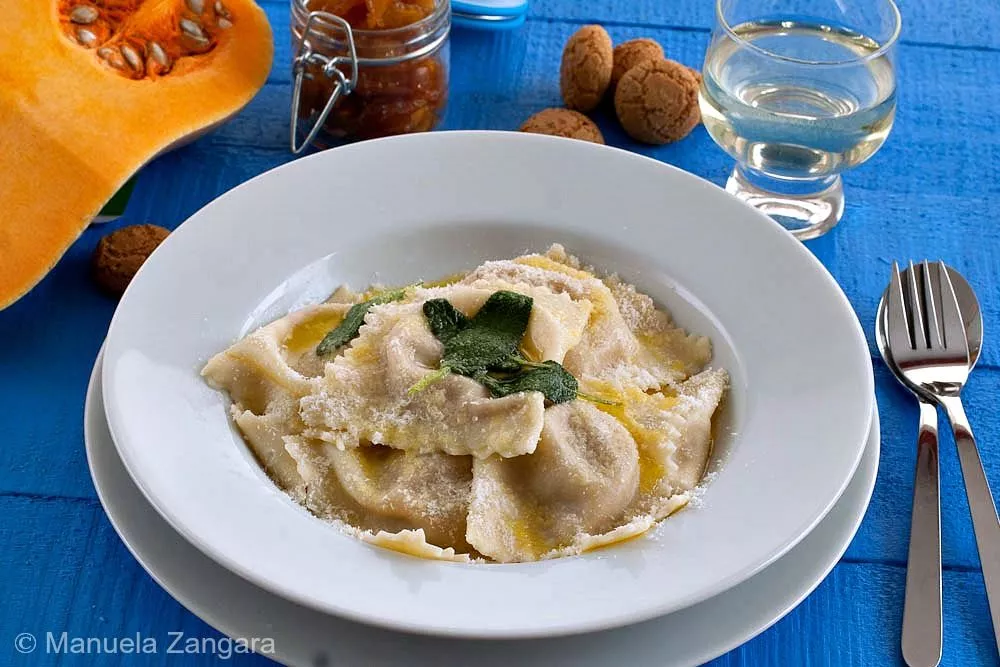
After sharing how to make Mostarda Mantovana, I couldn’t wait to show you one of my favourite ways to use it. Tortelli di Zucca (Pumpkin Tortelli) is a traditional pasta from Mantova in Lombardy and one of the region’s most loved recipes.
I made these for my family the other night, and they didn’t last long. Even my little ones enjoyed them and didn’t mind “eating their veggies.” This recipe is a perfect example of regional Italian cooking. If you’d like to try more dishes like this, take a look at my collection of Regional Italian Recipes.
What Makes Tortelli di Zucca a Mantuan Favourite
- Offers a lighter, vegetable-based alternative to meat-filled pasta while still feeling satisfying and rich in flavour.
- Fills the table with warmth during autumn and winter, when pumpkins are at their best and families gather for slow meals.
- Works equally well as a first course for festive dinners or as a main dish for a quiet family meal.
A Taste of Mantova
Tortelli di Zucca means pumpkin tortelli, a filled pasta from Mantova in northern Italy’s Lombardy region. It is one of the area’s most loved dishes, often prepared in autumn and during the Christmas season. Every family makes it in their own way, but they all share the same idea of tender pasta filled with pumpkin, amaretti biscuits, and Mostarda Mantovana, then tossed with melted butter and sage. The mix of sweet pumpkin, gentle spice, and salty Parmigiano Reggiano is a combination that makes every forkful worth the effort.
Key Ingredients for Tortelli di Zucca
Pumpkin
Choose a firm, sweet variety such as butternut or Kent. These types have a rich taste and smooth texture that work best for the filling. Roasting concentrates the flavour and keeps the mixture from becoming watery.
Amaretti Biscuits
They give a mild almond note and a light sweetness that complements the pumpkin. Crush them finely so they mix evenly into the filling.
Mostarda Mantovana
Mostarda Mantovana adds a gentle spice and a fruity note that make the tortelli characteristic of Mantova. Chop it finely so it spreads evenly through the mixture.
Parmigiano Reggiano
It adds a savoury element and depth to the filling. Freshly grated cheese blends well and ties all the ingredients together.
Find the complete list with measurements in the recipe card below.
How to Make Tortelli di Zucca (Pumpkin Tortelli)
Filling
Step 1: Cut the pumpkin and bake it in a preheated oven at 140°C – 285°F for 40 to 50 minutes, or until soft. Let it cool down.
Step 2: Cut out the skin (you can also bake the pumpkin without the skin) and put the pumpkin in a bowl.
Step 3: Add the powdered amaretti, mostarda Mantovana, Parmigiano Reggiano, nutmeg, and enough breadcrumbs to make a firm and workable filling.
Tortelli
Step 1: Make the tortelli following my tutorial on How to Make Ravioli or Tortelli.
Step 2: Set them aside until ready to cook.
Sauce
Step 1: Put the butter and sage in a small saucepan. Let the butter melt over medium heat, and gently fry the sage in it.
Step 2: Remove from the heat as soon as it starts to bubble (you don’t want it to brown). Add a pinch of salt.
Assembling
Step 1: Cook the tortelli following the steps on How to Cook Pasta al Dente.
Only in this case, you will not have a preset cooking time. This will vary depending on the thickness of your pasta (it should take approximately a couple of minutes to cook if you have just made the pasta).
Notes: If a number of hours have passed since you made the pasta, it will be slightly dry and could take between 10-12 minutes to cook.
The best solution is to taste it. Remember to check the joint where your pasta is thicker. It should remain firm to be al dente.
Step 2: When the pasta is cooked, drain it and put it in the pan with the butter and sage sauce. Mix well over low heat for a minute.
Step 3: Serve hot with some finely grated Parmigiano Reggiano on top.
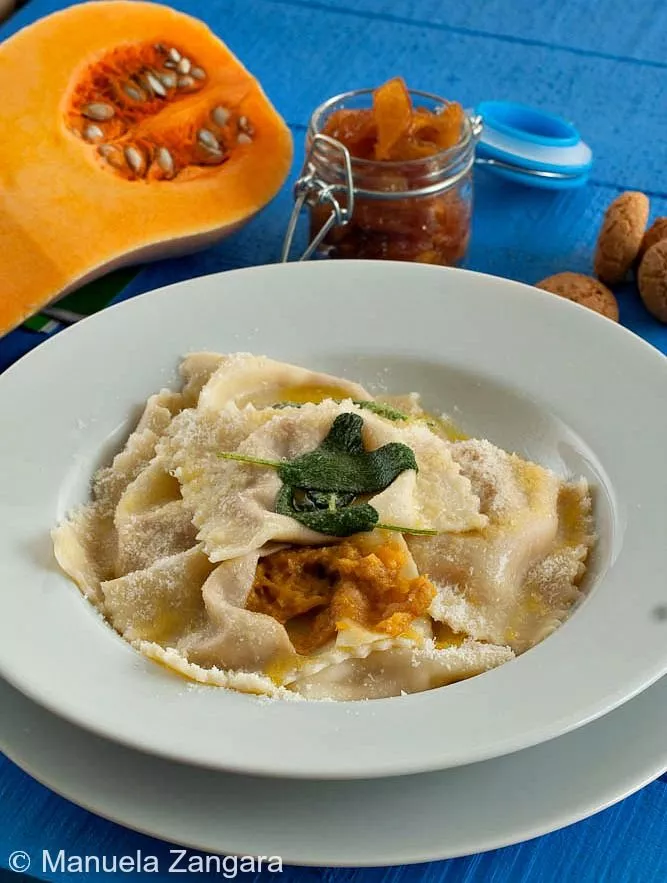
Frequently Asked Questions
Press around the edges to seal them properly and cook in gently boiling water. This helps them stay intact and tender.
Traditionally, it’s served with melted butter, crisp sage leaves, and a sprinkle of Parmigiano Reggiano. This simple sauce brings out the balance of sweet and savoury flavours in the filling.
Yes. Freeze uncooked tortelli in a single layer until firm, then store in a bag. Cook directly from frozen, adding a few extra minutes to the usual time.
Extra Help from the Kitchen
Roast the Pumpkin Instead of Boiling – It helps remove excess moisture and gives a more concentrated taste.
Let the Filling Cool Before Using – A cooler filling is firmer and easier to seal inside the pasta.
Adjust the Filling by Tasting – Each pumpkin varies in sweetness, so taste before shaping and add more cheese or breadcrumbs if needed.
Seal the Pasta Well – Press around the edges to remove any air, which helps the tortelli stay closed while cooking.
Don’t Overfill the Pasta – Add about one teaspoon of filling per tortello. Too much makes it difficult to seal and can cause leaks during boiling.
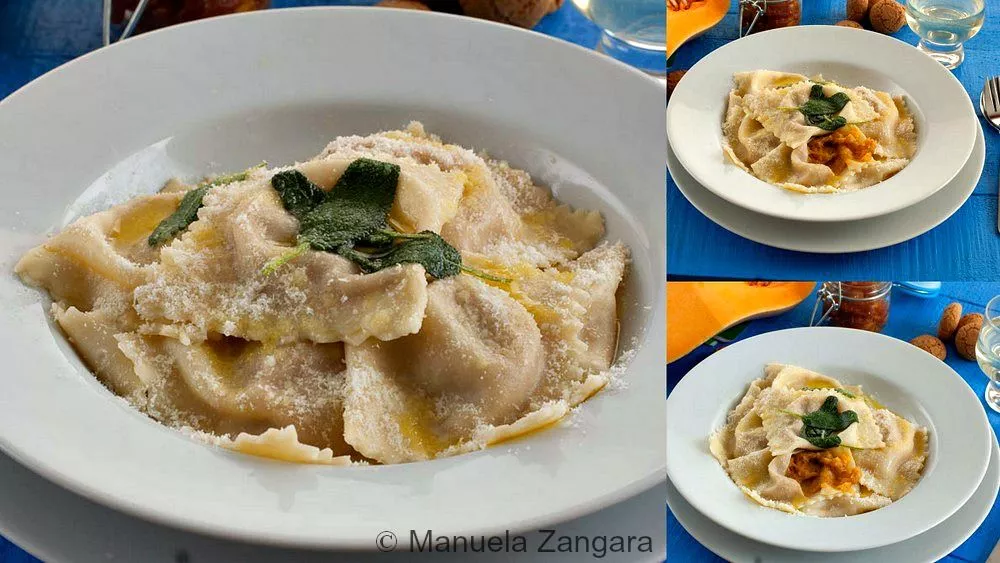
Variations and Twists
Use Ricotta with the Pumpkin – Mixing a little ricotta with the pumpkin makes the filling creamier and lighter while keeping the traditional balance of sweet and savoury.
Try Different Pumpkin Varieties – Some cooks in Italy mix butternut with kabocha or red kuri squash for a deeper colour and richer taste.
Add Lemon Zest to the Filling – A small amount of zest adds freshness and balances the natural sweetness of the pumpkin and amaretti.
Make a Brown Butter and Amaretti Sauce – Melt the butter until golden and add crushed amaretti on top for a nutty, slightly caramelised finish.
Serve with Sage-Infused Olive Oil – For a dairy-free option, warm olive oil with fresh sage leaves. It keeps the flavour traditional but lighter than butter.
Storage and Shelf Life
Keep leftover Tortelli di Zucca in an airtight container in the fridge for up to 2 days. When ready to serve, reheat gently in a pan with a small piece of butter or a spoonful of water to loosen the sauce. Avoid using high heat so the pasta keeps its texture.
Uncooked Pumpkin Tortelli can be frozen for up to 2 months. Place them on a tray in a single layer until firm, then transfer to a container or freezer bag. Cook straight from frozen, adding a few extra minutes to the cooking time.
If you’ve already mixed the filling but haven’t assembled the pasta, you can keep the filling covered in the fridge for 1 day before using.
Pasta Recipes Worth Making at Home

Tortelli di Zucca (Pumpkin Tortelli)
Tortelli di Zucca, or Pumpkin Tortelli, is one of Mantova’s most loved dishes, pasta filled with roasted pumpkin and amaretti, served with golden butter and crisp sage leaves.
Ingredients
Filling
- 800 g – 1¾ lbs pumpkin – weighed after being peeled
- 100 g – 3.5 oz amaretti cookies – powdered
- 2 tbsp Mostarda Mantovana – finely chopped
- 100 g – 3.5 oz Parmigiano Reggiano – finely grated
- 1 pinch nutmeg
- breadcrumbs
- salt – to taste
Tortelli
- 300 g – 10.5 oz flour
- 3 eggs
Sauce
- 80 g – 5½ tbsp butter
- 6 sage leaves
- salt and pepper
- Parmigiano Reggiano – finely grated
Instructions
Filling
-
Cut the pumpkin and bake it in a preheated oven at 140°C – 285°F for 40 to 50 minutes, or until soft. Let it cool down.
-
Cut out the skin (you can also bake the pumpkin without the skin) and put the pumpkin in a bowl.
-
Add the powdered amaretti, mostarda Mantovana, Parmigiano Reggiano, nutmeg, and enough breadcrumbs to make a firm and workable filling.
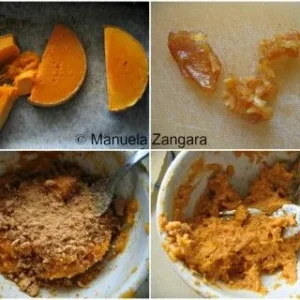
Tortelli
-
Make the tortelli following my tutorial on How to Make Ravioli or Tortelli.
-
Set them aside until ready to cook.
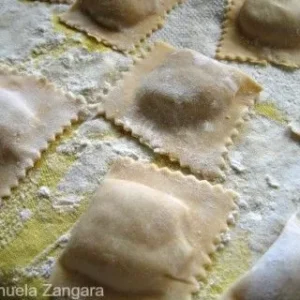
Sauce
-
Put the butter and sage in a small saucepan. Let the butter melt over medium heat, and gently fry the sage in it.
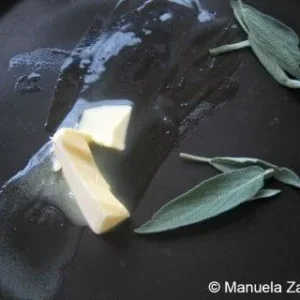
-
Remove from the heat as soon as it starts to bubble (you don’t want it to brown). Add a pinch of salt.
Assembling
-
Cook the tortelli following the steps on How to Cook Pasta al Dente.
Only in this case, you will not have a preset cooking time. This will vary depending on the thickness of your pasta (it should take approximately a couple of minutes to cook if you have just made the pasta).
Notes: If a number of hours have passed since you made the pasta, it will be slightly dry and could take between 10-12 minutes to cook.
The best solution is to taste it. Remember to check the joint where your pasta is thicker. It should remain firm to be al dente.
-
When the pasta is cooked, drain it and put it in the pan with the butter and sage sauce. Mix well over low heat for a minute.
-
Serve hot with some finely grated Parmigiano Reggiano on top.





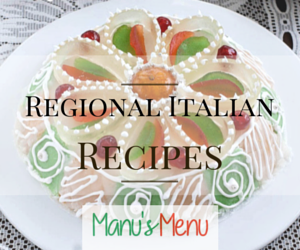

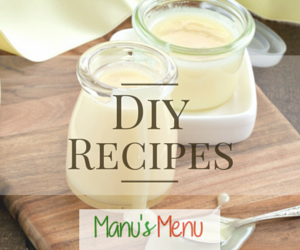
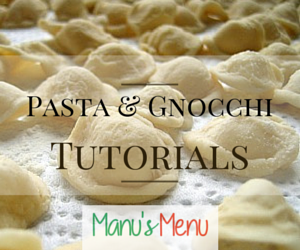

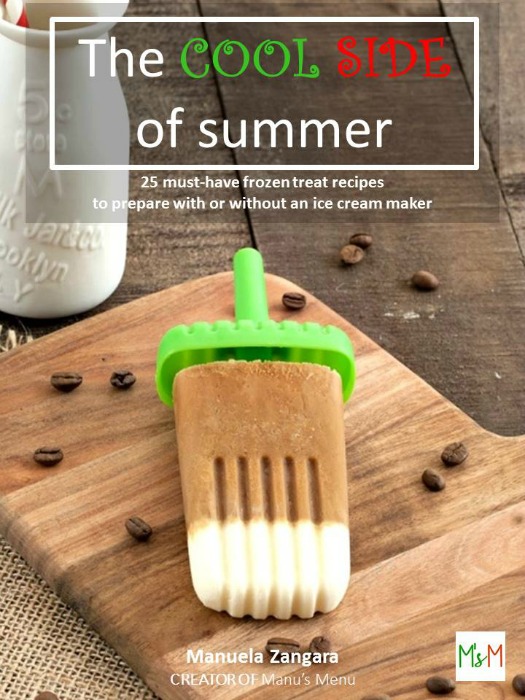








Esta é minha comida italiana preferida, pois dispensa molhos pesados, carnes, etc. Os vegetarianos deveriam observar com mais atenção a cozinha italiana, pois é rica em pratos sem a presença de carnes.
I remember having these—or something very much like them—in Ferrara. They were incredible! It’s hard to reproduce the flavor here in the States, as pumpkins just don’t have the same intense flavor as the Italian zucche. Not sure why…
This just jumps off the page. I wish I had a bowl of it right now!!
This, as you may have seen last week on my IG, is one of my favorite things ever. I adore tortelli di zucca. They look delicious!
I am growing seed for the Zucca Beretta Mantovana this year, and I am very excited to make this dish with it. If the yield is large enough we will start selling the seeds certified organic as well. Thanks for the recipe!
It’s not true that everyone in Italy knows about this recipe! It’s typical from the Mantova area thus northern like risotto. It’s easy yes but it requires also a special taste for pumpkin, growing up very few ppl from the Mantova area were making this delicate dish !